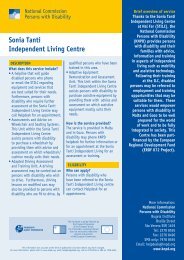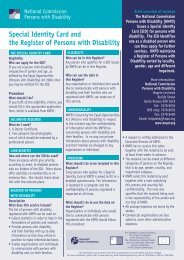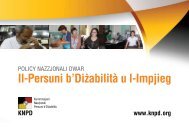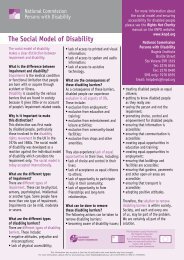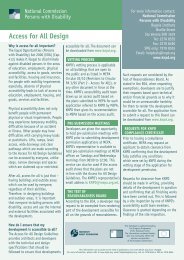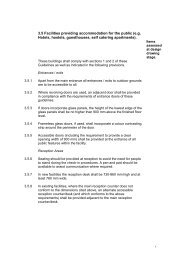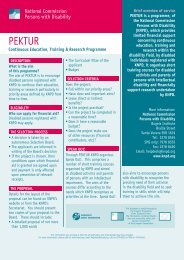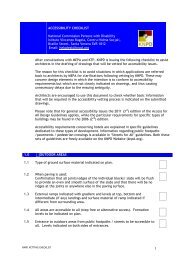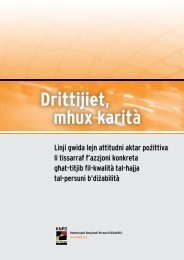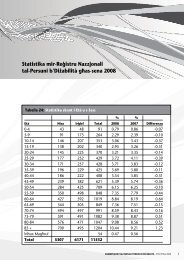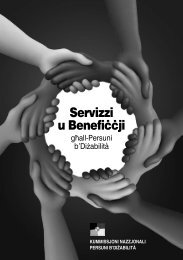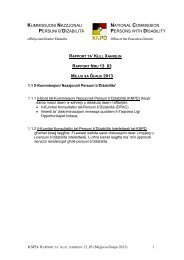KNPD visual report.pdf
KNPD visual report.pdf
KNPD visual report.pdf
Create successful ePaper yourself
Turn your PDF publications into a flip-book with our unique Google optimized e-Paper software.
MOT in practice, if such training was to be<br />
delivered:<br />
• 46 respondents (35.4%) did not think<br />
of any issues which might need to be<br />
addressed.<br />
Many respondents mentioned more<br />
than one measure.<br />
• 26 respondents (20%) said that streets<br />
need to be made more accessible<br />
in a way that blind and <strong>visual</strong>ly<br />
impaired persons can go out and<br />
about safely. The obstacles mentioned<br />
were: inconsistent paving, garbage<br />
bags left on the streets, traffic lights<br />
not equipped with audible signals,<br />
pregnant windows and electrical<br />
poles in the way. The need for more<br />
accessible streets was the most<br />
frequently mentioned comment by the<br />
respondents.<br />
• 19 respondents (14.6%) mentioned the<br />
fact that there should be more disability<br />
awareness training for sighted persons.<br />
Comments regarding this matter said<br />
that it is important that sighted persons<br />
are aware of the needs and difficulties<br />
that blind and <strong>visual</strong>ly impaired persons<br />
encounter while going out and about.<br />
• 17 respondents (13.1%) mentioned<br />
the need for more accessible public<br />
transport. Visually impaired persons<br />
commented that they find it extremely<br />
difficult to use public transport for<br />
different matters such as not being<br />
able to see the number at the front<br />
of the bus thus not knowing to which<br />
destination the bus is heading, bus<br />
drivers stopping the vehicles in the<br />
middle of the streets rather than on<br />
bus-stops next to sidewalks and not<br />
being able to determine when the bus<br />
has arrived at the destination where<br />
they want to get off the bus.<br />
• 3 respondents (2.3%) mentioned<br />
the need for better enforced traffic<br />
regulations. They recounted that they<br />
are afraid of going out unassisted as<br />
they are afraid of being run over by cars<br />
and that traffic does not stop for them<br />
to cross roads not even on pedestrian<br />
crossing.<br />
• 3 respondents (2.3%) said that in order<br />
to be able to make use of mobility and<br />
orientation training they would first<br />
need to be provided with personal<br />
assistance to get assistance in carrying<br />
out tasks at home.<br />
• 2 respondents (1.5%) said that in<br />
conjunction with MOT they would<br />
require training in daily living skills to<br />
acquire knowledge on how to carry<br />
out tasks at home independently such<br />
as doing the laundry, housekeeping,<br />
cooking and personal hygiene. Such<br />
12



